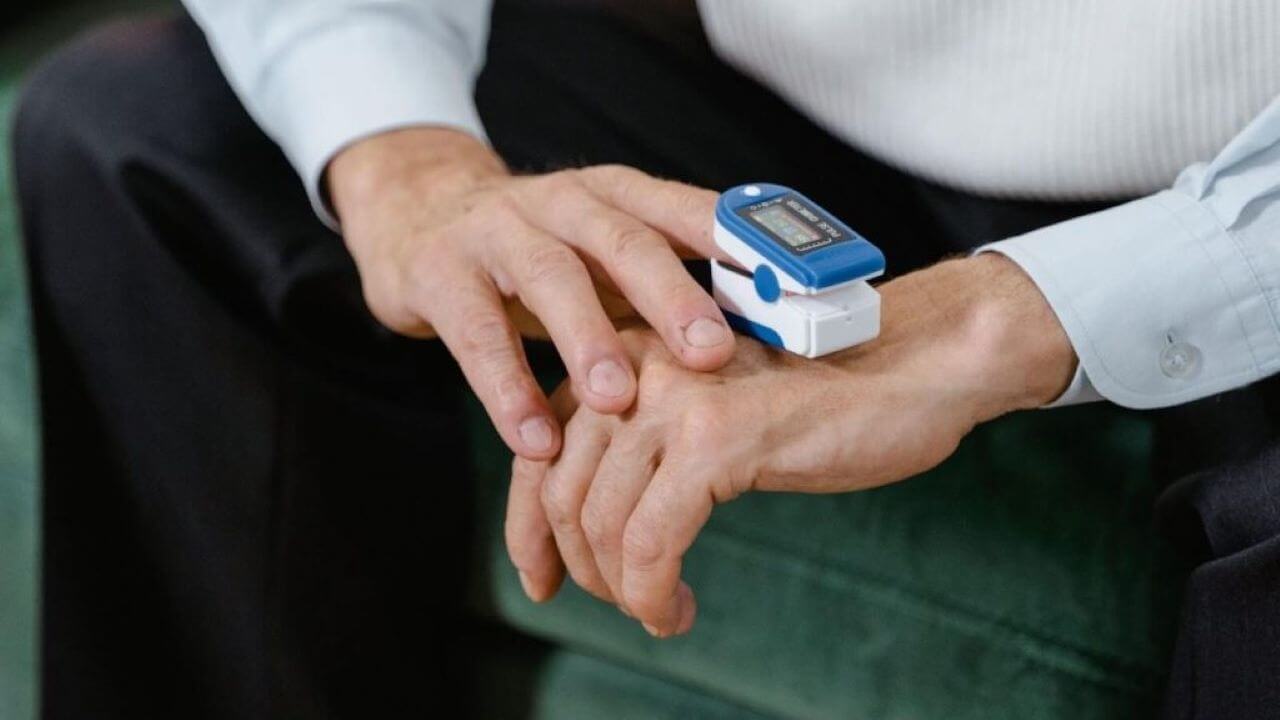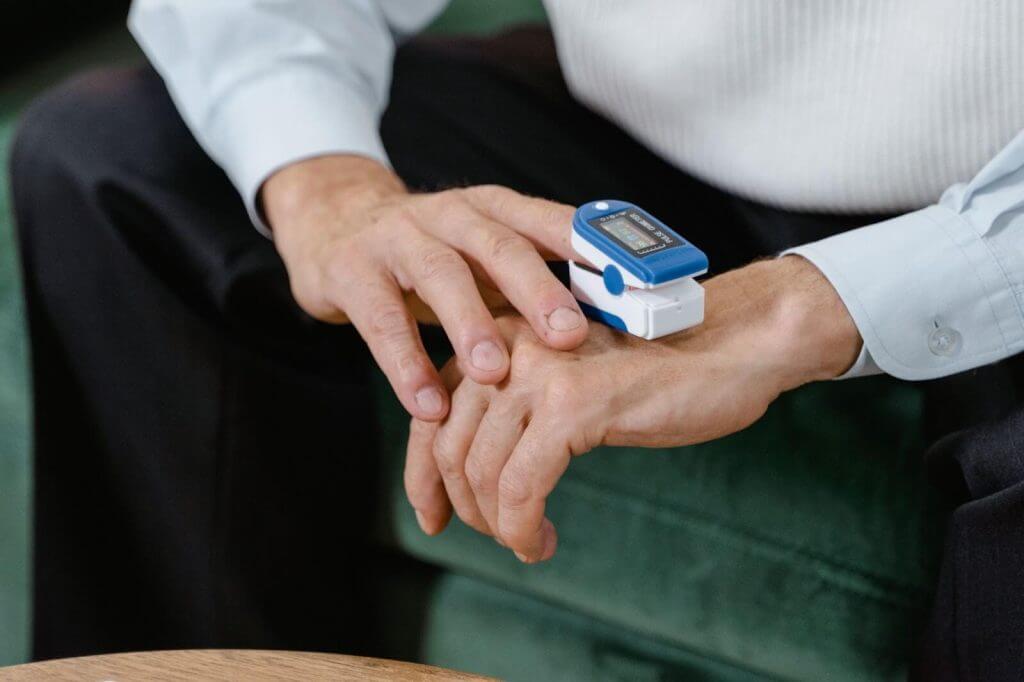How to Monitor Your Blood Oxygen Level While Sleeping for Optimal Sleep Quality
Sleep is an essential function of the human body, allowing it to rest, repair, and recharge. However, not all sleep is created equal and sleep impacted by excessive snoring, sleep apnea, or other disturbances that inhibit the flow of oxygen can be especially troubling.
Your quality of sleep can greatly impact your overall well-being and daily performance. One crucial aspect of sleep quality is the level of oxygen in your blood.
In this article, we will explore the importance of blood oxygen levels during sleep and provide you with practical tips on how to monitor them for optimal sleep quality.
Understanding the Importance of Blood Oxygen Levels
Before we dive into the specifics of monitoring blood oxygen levels during sleep, it is important to understand why this measurement is significant. Oxygen plays a crucial role in the body, fueling various bodily functions and promoting overall health and vitality.
Oxygen is vital for the proper functioning of every cell in your body. It is responsible for cellular respiration, the process that converts glucose into energy. Additionally, oxygen plays a key role in maintaining the health of vital organs, including the brain, heart, and muscles.
When you inhale, oxygen enters your lungs and is transported to your bloodstream. From there, it binds to hemoglobin molecules in red blood cells, which carry it to every part of your body. This oxygen-rich blood nourishes your cells, providing them with the energy they need to perform their functions effectively.
During physical activity or exercise, your body’s demand for oxygen increases. This is because your muscles require more energy to perform the necessary movements. In response, your heart rate and breathing rate increase to deliver more oxygen to your muscles.
However, oxygen levels are not only important during waking hours. They also play a crucial role in sleep quality and overall well-being. During sleep, your body undergoes a series of complex processes that promote physical and mental rejuvenation. Adequate oxygen levels are crucial for these processes to occur smoothly.
When your blood oxygen levels drop too low during sleep, it can disrupt your sleep cycle and impact the overall quality of your rest. This condition is known as nocturnal hypoxemia. It can lead to symptoms such as restless sleep, frequent awakenings, morning headaches, daytime fatigue, and difficulty concentrating.
Several factors can contribute to nocturnal hypoxemia. Obstructive sleep apnea (OSA) is one of the most common causes. OSA occurs when the airway becomes partially or completely blocked during sleep, leading to pauses in breathing and drops in blood oxygen levels.
Other conditions that can affect blood oxygen levels during sleep include chronic obstructive pulmonary disease (COPD), asthma, obesity, and certain heart conditions. It is important to identify and address any underlying medical conditions that may be impacting your blood oxygen levels during sleep.
Monitoring blood oxygen levels during sleep can provide valuable insights into your overall health and sleep quality. By tracking these levels, healthcare professionals can identify potential issues and develop appropriate treatment plans. This may involve lifestyle changes, such as weight loss or quitting smoking, or the use of medical devices, such as continuous positive airway pressure (CPAP) machines.
Maintaining adequate blood oxygen levels during sleep is crucial for overall health and well-being. By understanding the role of oxygen in the body and the impact of low blood oxygen levels on sleep quality, you can take steps to ensure optimal oxygenation and promote restful sleep.
The Science Behind Sleep and Oxygen Levels
To understand how blood oxygen levels impact sleep quality, let’s delve into the science behind the sleep cycle and oxygen consumption.
During sleep, our bodies undergo a complex and fascinating process known as the sleep cycle. This cycle consists of multiple stages, each serving a specific purpose in the restoration and regeneration of the body. The stages include light sleep, deep sleep, and rapid eye movement (REM) sleep.
As we transition through these stages, our oxygen consumption varies. During lighter stages of sleep, such as the initial stage of falling asleep, our bodies tend to have higher oxygen levels. This is because our breathing remains relatively steady, and our oxygen intake is sufficient to meet the body’s needs.
However, as we progress into deeper stages of sleep, our oxygen levels may slightly decrease. This is a natural occurrence as our bodies focus more on rest and recovery, and our breathing becomes slower and more regular. Despite the slight decrease in oxygen levels, our bodies are still able to maintain a healthy balance to support vital functions.
Effects of Low Oxygen Levels on Sleep
While slight decreases in oxygen levels during deep sleep are normal, significant drops in blood oxygen levels can have detrimental effects on sleep quality and overall health. When blood oxygen levels drop too low during sleep, it can lead to a condition called sleep apnea or hypoxemia.
Sleep apnea is characterized by pauses in breathing, often accompanied by loud snoring or gasping for air. These episodes can disrupt your sleep, causing you to wake up momentarily throughout the night. As a result, you may experience daytime fatigue, decreased cognitive function, and an increased risk of accidents due to impaired alertness.
Furthermore, repeated interruptions in breathing can put a strain on your cardiovascular system. The lack of oxygen triggers the release of stress hormones, which can lead to increased blood pressure and inflammation. Over time, this can contribute to the development of cardiovascular diseases such as hypertension, heart disease, and stroke.
It is important to note that sleep apnea can occur in varying degrees of severity. Some individuals may experience mild symptoms, while others may have more severe cases that require medical intervention. If you suspect that you or a loved one may have sleep apnea, it is crucial to seek professional medical advice for proper diagnosis and treatment.
Understanding the relationship between sleep and oxygen levels is essential for maintaining optimal sleep quality and overall well-being. By ensuring adequate oxygen intake during sleep, we can promote restful sleep, enhance cognitive function, and reduce the risk of sleep-related disorders.
Tools for Monitoring Blood Oxygen Levels at Home
Luckily, there are various tools available that allow you to monitor your blood oxygen levels in the comfort of your own home. Here are two commonly used devices:
Pulse Oximeters: A Comprehensive Guide
A pulse oximeter is a small device that attaches to your finger to measure blood oxygen levels. It works by emitting and detecting light wavelengths that are absorbed by oxygenated and deoxygenated blood. Pulse oximeters are non-invasive and provide real-time readings of your blood oxygen saturation levels.
Pulse oximeters have become an essential tool in the medical field. They are widely used in hospitals, clinics, and even by individuals at home. These devices are highly accurate and reliable, making them a valuable asset for monitoring blood oxygen levels.
One of the significant advantages of pulse oximeters is their ease of use. They are portable and lightweight, allowing you to carry them wherever you go. Whether you are traveling or simply want to keep track of your blood oxygen levels during daily activities, a pulse oximeter is a convenient option.
Furthermore, pulse oximeters are suitable for people of all ages, from infants to the elderly. They are particularly useful for individuals with respiratory conditions such as asthma, chronic obstructive pulmonary disease (COPD), or sleep apnea. By regularly monitoring their blood oxygen levels, these individuals can take necessary precautions and seek medical attention if needed.
Sleep Tracking Devices with Oxygen Level Monitors
In recent years, sleep-tracking devices have become increasingly popular. These devices often come equipped with sensors that can monitor various sleep parameters, including blood oxygen levels. They provide detailed reports and insights into your sleep patterns and can be a valuable tool for optimizing your sleep quality.
Sleep tracking devices with oxygen level monitors offer a comprehensive approach to monitoring your overall health. They not only track your blood oxygen levels but also analyze your sleep stages, heart rate, and even snoring patterns. This wealth of information can help you identify any potential sleep disorders or breathing difficulties that may be affecting your sleep quality.
These devices typically come in the form of wristbands or smartwatches that you wear while you sleep. They use advanced algorithms and sensors to measure your blood oxygen levels and provide accurate data. Some sleep tracking devices even offer personalized recommendations and tips for improving your sleep habits based on your sleep patterns.
By using a sleep tracking device with an oxygen level monitor, you can gain valuable insights into your sleep quality and make necessary adjustments to improve your overall well-being. Whether you are looking to optimize your sleep for better productivity or manage a sleep disorder, these devices can be a helpful companion on your journey to better sleep.
How to Use a Pulse Oximeter for Sleep Monitoring
Now that you are familiar with the different tools available, let’s explore how to use a pulse oximeter effectively for sleep monitoring.
Setting Up Your Pulse Oximeter
Start by carefully reading the instructions provided with your pulse oximeter. Clean your finger and make sure it is free from any nail polish or dirt that could interfere with the accuracy of the readings. Attach the pulse oximeter to your finger and wait for it to calibrate.
Interpreting Pulse Oximeter Readings
Pulse oximeters typically display two measurements: oxygen saturation (SpO2) and pulse rate. Oxygen saturation indicates the percentage of oxygen in your blood. Generally, a healthy range is considered to be between 95% and 100%. However, it is important to consult with a healthcare professional to determine your target range based on your specific health condition.
Tips for Maintaining Optimal Blood Oxygen Levels
Monitoring your blood oxygen levels during sleep is valuable, but it is equally important to actively promote optimal levels for improved sleep quality and overall health. Here are some tips to help you maintain optimal blood oxygen levels:
Lifestyle Changes for Better Oxygen Levels
Adopting a healthy lifestyle can significantly impact your blood oxygen levels. Make sure to engage in regular exercise, maintain a balanced diet rich in nutrients, and avoid smoking or exposure to secondhand smoke. Additionally, keeping your bedroom well-ventilated can promote a fresh and oxygen-rich sleeping environment.
Breathing Exercises to Boost Oxygen Intake
Practicing deep breathing exercises, such as diaphragmatic breathing or alternate nostril breathing, can help increase oxygen intake and improve lung capacity. These techniques can be incorporated into your bedtime routine to relax your body and promote optimal oxygen levels during sleep.
Final Recommendations
In conclusion, monitoring your blood oxygen levels during sleep is a valuable tool for optimizing sleep quality and overall health. With the help of pulse oximeters and sleep-tracking devices, you can gain insights into your oxygen saturation levels and make informed decisions to improve your sleep environment and lifestyle habits. Remember to consult with a healthcare professional for personalized guidance and target ranges specific to your individual health needs. By prioritizing your blood oxygen levels while sleeping, you can enhance your sleep and wake up feeling refreshed and revitalized.





